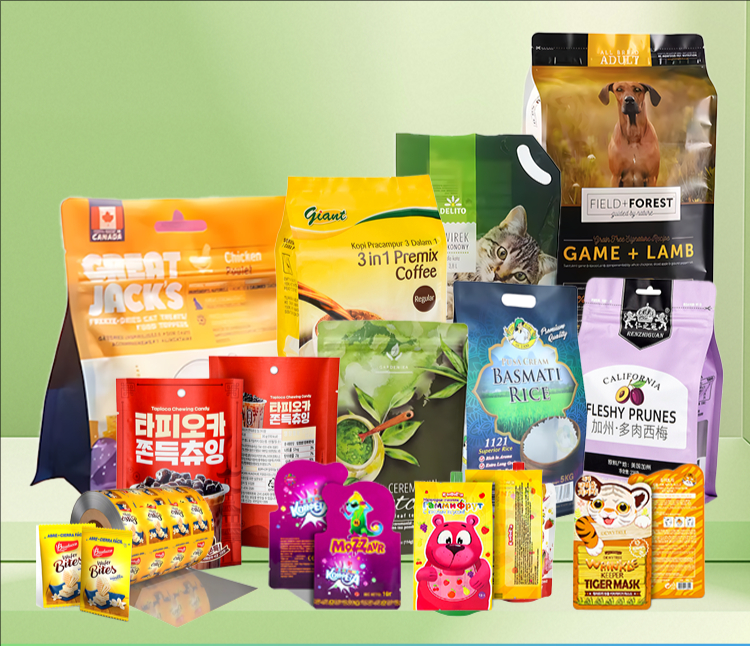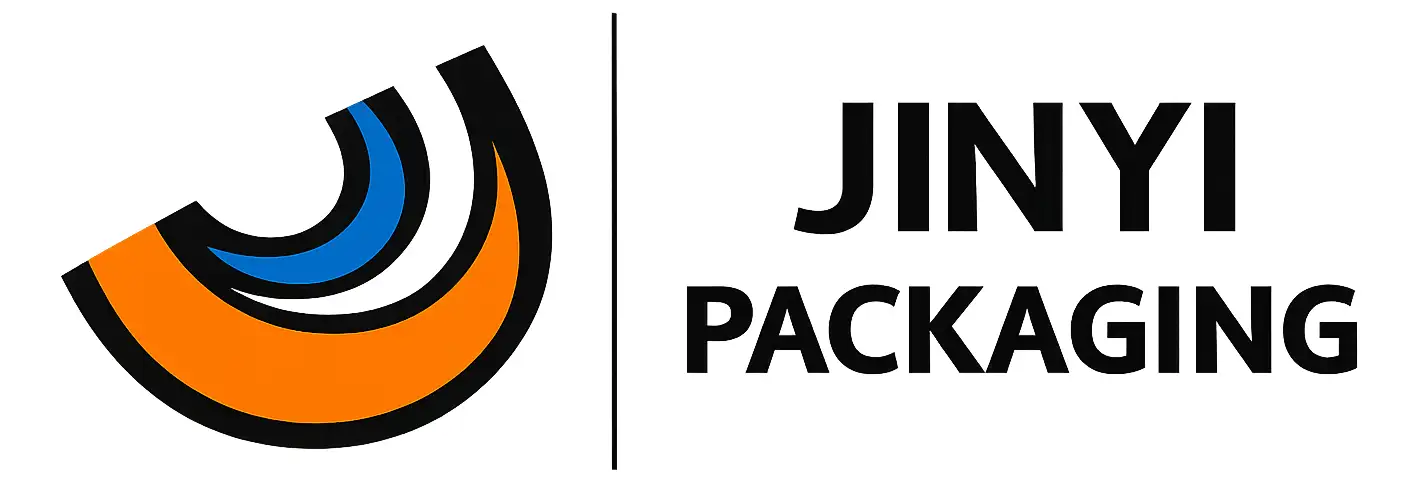Global Demand for Sustainable Packaging on the Rise
Home » Industry-News » Global Demand for Sustainable Packaging on the Rise

Introduction: Why Sustainable Packaging Matters Now More Than Ever
In recent years, sustainability has evolved from a marketing buzzword into a critical business strategy across the global supply chain. Among the most heavily impacted sectors is packaging—particularly sustainable packaging for food, consumer goods, and e-commerce. As environmental awareness rises and regulatory pressures intensify, businesses are rethinking their approach to packaging to align with a greener future.
From reducing single-use plastics to embracing recyclable, compostable, or bio-based materials, brands across industries are turning toward packaging solutions that minimize environmental impact without sacrificing performance, durability, or consumer appeal.
At Jinyi Packaging, we understand that sustainability is no longer optional. It’s essential. This article explores the key drivers, market trends, industry shifts, and how flexible packaging manufacturers are innovating to meet the demand for sustainable packaging.
1. What Is Sustainable Packaging?
Sustainable packaging refers to packaging that is designed with environmental impact in mind. It focuses on reducing waste, conserving resources, and minimizing carbon footprints throughout the packaging lifecycle—from raw material sourcing and manufacturing to use, disposal, and potential recycling.
Key principles of sustainable packaging include:
Using renewable or recycled materials
Designing for reusability or recyclability
Reducing excess packaging or weight
Ensuring packaging is safe and effective for its intended use
Promoting a circular economy
Sustainable packaging must strike a balance between functionality, cost-effectiveness, and environmental responsibility.
2. What’s Driving Global Demand for Sustainable Packaging?
The sharp rise in demand for eco-friendly packaging is the result of several converging factors:
● Consumer Awareness and Preferences
Today’s consumers are more informed and environmentally conscious than ever. Surveys show that more than 60% of global shoppers prefer products with sustainable packaging, even if they cost slightly more. For younger generations—especially Millennials and Gen Z—sustainability is a major factor in brand loyalty and purchase decisions.
● Government Regulations
Governments around the world are implementing stricter rules on packaging waste and materials:
EU’s Green Deal requires 100% recyclable packaging by 2030
China’s Plastic Ban Policy restricts single-use packaging in retail and foodservice
US states like California and New York are introducing Extended Producer Responsibility (EPR) programs and PFAS bans
● Corporate Sustainability Goals
Major global brands, including Nestlé, Unilever, and PepsiCo, have pledged to reduce virgin plastic use and improve recyclability in all product packaging. Many have set “zero-waste” or carbon-neutral packaging goals by 2030.
● Retail and Supply Chain Pressures
Retailers like Walmart and Amazon are asking suppliers to meet sustainability benchmarks. Packaging that’s lighter, more efficient, and environmentally friendly reduces logistics costs and aligns with supplier scorecard criteria.
3. Materials and Technologies in Sustainable Packaging
The move toward sustainable packaging has led to the development and adoption of new materials and technologies:
✅ Compostable Films
Made from plant-based polymers like PLA (polylactic acid), these materials break down in industrial composting facilities.
✅ Recyclable Laminates
Mono-material structures using PE or PP make it easier for recycling centers to process flexible packaging. New barrier coatings are replacing aluminum foil or PET for recyclability.
✅ Bio-based Plastics
Derived from renewable sources like corn starch, sugarcane, or cellulose, these materials reduce dependence on fossil fuels.
✅ Paper-Based Flexible Packaging
Reinforced paper packaging, combined with thin barrier layers, offers an eco-friendly option for dry goods, snacks, and powders.
✅ Water-based Inks and Adhesives
Replacing solvent-based chemicals with water-based or UV-curable options lowers VOC emissions and improves food safety compliance.
At Jinyi Packaging, we offer a range of sustainable materials tailored for food safety, moisture resistance, and branding appeal.
4. Industries Driving the Shift Toward Eco-Friendly Packaging
🛒 Food & Beverage
Flexible pouches, laminated film rolls, and ziplock bags used for coffee, snacks, sauces, and frozen goods are increasingly being made with sustainable layers and biodegradable options.
🐶 Pet Food
Brands are moving toward recyclable stand-up pouches that maintain freshness while meeting environmental expectations.
💻 E-Commerce
Mailers and protective wraps are now made from paper-based or mono-material options, replacing conventional plastics.
🧴 Personal Care & Cosmetics
Sustainable cosmetic sachets and refill pouches are gaining popularity among eco-conscious brands.
5. Challenges in Implementing Sustainable Packaging
While the momentum is strong, brands and packaging suppliers still face several obstacles:
Cost Pressure: Bioplastics and recyclable films can be 20–30% more expensive than traditional plastic.
Supply Chain Readiness: Limited availability of certified sustainable materials in some regions
Recycling Infrastructure: Many countries still lack the capacity to process flexible films effectively
Performance Concerns: Some compostable or paper-based materials struggle with high moisture or oil content
This is where experience, engineering, and customization matter. Jinyi Packaging helps customers navigate these challenges by offering tested, scalable, and compliant solutions.
6. How Jinyi Packaging Supports Sustainable Packaging Goals
As a professional manufacturer of flexible packaging film rolls, vacuum bags, and stand-up pouches, Jinyi Packaging has adopted eco-conscious practices across every stage of production:
✅ Sustainable Material Sourcing
FSC-certified paper, bio-based PE/PLA, and recyclable mono-PE films
Low-migration inks and solvent-free laminates
✅ Custom Eco-Friendly Designs
Packaging optimized for size, weight, and storage
High barrier performance with reduced material usage
Designed for recyclability or compostability where applicable
✅ Certifications and Compliance
FDA, EU 10/2011, GB4806 food safety standards
SGS testing available for recyclability, migration, and heavy metals
Support for EPR compliance documentation
✅ Manufacturing Efficiency
Energy-saving lamination and slitting machines
Waste reduction initiatives in film roll cutting
In-house R&D for material optimization
7. Future Trends in Sustainable Packaging
The road to sustainability in packaging is still unfolding. Key trends shaping the future include:
🌍 Circular Packaging Models
From take-back programs to refill stations, brands are adopting closed-loop systems to minimize waste.
📦 Smart & Connected Packaging
Digital technologies like QR codes provide transparency into material sourcing and recycling instructions.
♻️ Global Recycling Standards
Harmonization efforts may make it easier for brands to use one packaging format worldwide.
🧪 Innovation in Green Chemistry
Non-toxic, bio-based coatings and adhesives will become the norm for food-grade flexible packaging.
Conclusion: Sustainability Is the Future of Packaging
The global rise in sustainable packaging demand is not a passing trend—it’s a permanent shift in how businesses must operate. Consumers expect it. Regulators demand it. And responsible manufacturers, like Jinyi Packaging, are delivering it.
By combining performance, safety, and environmental responsibility, we offer food-grade flexible packaging that not only protects your products but also supports your sustainability goals.
🌿 Let’s build a greener future, one package at a time.
📩 Contact Jinyi Packaging to learn more about our sustainable packaging options or request a free consultation.

